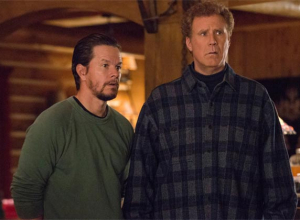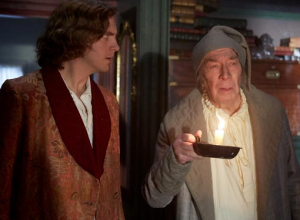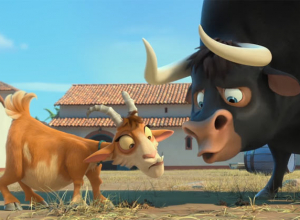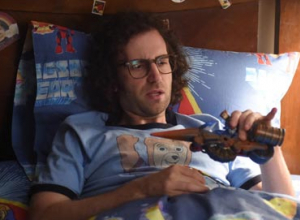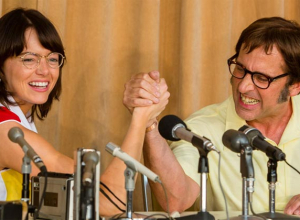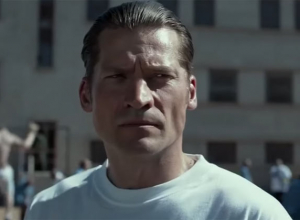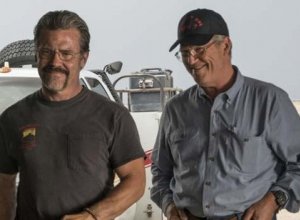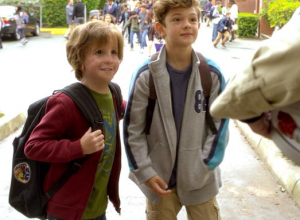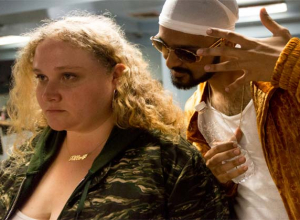WALL-E Review
By Sean O'Connell
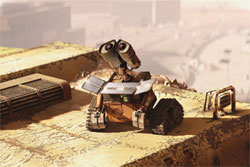
Right around the time Pixar Animation Studios released its fifth feature, Finding Nemo, conversation shifted from "Is it any good?" to "Just how amazing is it?" Quality was assumed, and rightfully so. The studio's creative directors helped redefine the animation genre with the Toy Story franchise, A Bug's Life and Monsters, Inc. Subsequent Pixar stories were measured against their predecessors and ranked accordingly.
WALL-E, the studio's ninth full-length feature and second from director Andrew Stanton, catapults to the head of Pixar's illustrious class. The enchanting tale of a lonely robot's quest for companionship is one of the studio's finest films, an absolute masterpiece that continues Pixar's initial promise to transport us to infinity and beyond. Yet even that label limits the film's staggering accomplishments. WALL-E seamlessly melds wondrous science-fiction, big-screen romance, and adolescent heart. One of the year's best films, WALL-E likely will go on to be considered one of the greatest animated movies ever created.
High praise for such a diminutive and doe-eyed little character, yet WALL-E earns every pat on his boxy back. His name is an acronym for Waste Allocation Load Lifter - Earth Class. Roughly 700 years from now, pollution produced by the Buy-N-Large corporation has forced mankind off our waste-covered planet, and WALL-E has stayed behind to clean up. One man's trash is another robot's treasure. This scavenger of cultural minutia hoards Rubik's cubes, paddle balls, and his most prized possession -- a VHS copy of Gene Kelly's 1969 musical, Hello, Dolly!
WALL-E maintains a quiet, dutiful, and lonely existence. His sole companion is an indestructible cockroach, perhaps a direct descendant of Jiminy Cricket, whose presence confirms the rumor that roaches really will be the last creatures left on Earth. But WALL-E's life changes -- and our story takes off -- when a skyscraper-sized spaceship drops off a second robot, EVE (Extraterrestrial Vegetation Evaluator), and teases our hero with the potential of friendship.
WALL-E reached emotional chords that haven't been plucked by Pixar since Nemo, which is appropriate since both films are directed by wunderkind storyteller Stanton, a Pixar protégé who had a hand in writing the studio's first five features before co-directing A Bug's Life with Pixar poobah John Lasseter. If Lasseter represents the right side of Pixar's collective brain, then Stanton is the studio's beating heart. Stanton's gift is his ability to make us care deeply about objects we normally wouldn't concern ourselves with -- toys, ants, clown fish, and trash-compacting robots.
Because Stanton's robots don't speak in conventional methods, WALL-E conveys a wide range of emotions with deliberate hand gestures, unmistakable facial reactions, and sound designer Ben Burtt's robotic bleeps. Burtt won the first of his two Oscars for creating similarly expressive "dialogue" in Steven Spielberg's E.T., one of many films WALL-E lovingly references.
Music picks up the slack, turning a number of scenes into unforgettable interludes. We feel the freedom of EVE's first flight. Alone at last, this carefree robot stretches her proverbial wings and glides on the soaring musical cues provided by composer Thomas Newman's warmhearted score. Late in the film, these star-crossed lovers enjoy a touching intergalactic reunion. Thinking about it makes my heart skip a beat.
It's during the film's second half, which follows WALL-E and EVE back to a floating barge dubbed The Axiom, where Stanton explains what has become of the human race. Oh, you're not going to like it. In a nutshell, mankind's complete dependence on robotic assistance has turned us into gelatinous sloths. The simple act of standing upright is considered such an achievement, Stanton plays the recognizable title music from Stanley Kubrick's 2001 behind a tubby ship captain as he struggles to exit his personal hovercraft and find his feet.
But the stakes are higher, and the consequences larger, with WALL-E. Pixar's previous problems involved the defense of an anthill from grasshoppers and the dramatic rescue of a fish from a dentist's tank. Gripping, sure, yet hardly earth-shattering. Not so with WALL-E, whose goal -- beyond love and companionship -- involves protecting the last known plant species which, in the right hands, could bring environmental balance back to our devastated planet. With WALL-E, the end result just might be the salvation of mankind, the conservation and restoration of Mother Earth.
And why not? The geniuses at Pixar continually change our world with each new film. I used to waste time wondering when Pixar would stumble. Despite the company's stellar track record, a flop seemed inevitable. Now that I'm certain it can't happen, I'm free to ponder more positive notions. Like, how high can this dream factory soar? And how much further will they be able to raise the storytelling bar? And how on Earth will I pass the time until Pixar's next endeavor, Up, arrives in theaters to charm, amaze, and enthrall us, as the studio has done time after time?
Aka WALL·E, WallE, Wall E.
Here's to good friends, tonight is kinda special.
Facts and Figures
Year: 2008
In Theaters: Friday 4th July 2008
Box Office Worldwide: $521.3M
Budget: $180M
Production compaines: Pixar Animation Studios, Walt Disney Pictures
Reviews
Contactmusic.com: 5 / 5
IMDB: 6.8 / 10
Cast & Crew
Director: Andrew Stanton
Producer: Jim Morris, Lindsey K. Collins
Screenwriter: Andrew Stanton
Starring: Ben Burtt as WALL·E / M-O (voice), Elissa Knight as EVE (voice), Jeff Garlin as Captain (voice), Fred Willard as Shelby Forthright, BnL CEO, Sigourney Weaver as Ship's Computer (voice)
Also starring: Andrew Stanton

